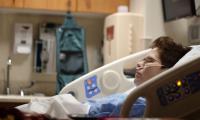We constantly discover, invent, and improve to survive and grow in this world. Interestingly, for those of us who don’t improve, life creates situations and circumstances that force us to bring in the much needed change.
The Covid-19 pandemic is one such situation for the healthcare system in Pakistan. Today, the entire healthcare industry has been given a wake-up call. Medical personnel are grappling to provide services and care to their communities, and desperately putting their lives at stake to save patients. The gaps and inefficiencies in our system have been laid bare for all. Rejuvenating the system is a tall ask, and would require purity of intent and persistence; however, few aspects need to be addressed urgently.
The concept of safety is almost non-existent and, barring a few exceptions, a functional safety committee is an abstract notion. The attitude of both the government and hospital managements towards medical staff safety is appallingly indifferent.
This committee is responsible to ensure a safe environment from possible infectious and non-infectious hazards like fire, radiation, chemical and physical injury.
In the recent scenario, the unprecedented demand but interrupted, inadequate supplies of PPEs (personal protective equipment) has placed our frontline troopers’ lives at jeopardy. We fail to provide appropriate, ample safety gears for them. This also has a ripple effect; these staff could become a source of spread in their communities.
Therefore, it is now the right time for all sorts of healthcare systems to enforce a safety committee. The structure and dynamic could vary with the scope of the facility. During an emerging outbreak, they must preempt situations and liaise with government health agencies to ensure availability of protective gears, testing and lifesaving equipment and medicine. They should also ensure that safety regulations are being fully followed vis-a-vis usage and disposal of gears and equipment, and handling and disposal of infectious corpses.
An active, efficient infection prevention and control department is considered a linchpin in patient care. The core responsibility of this team is clearly specified with the underlying principle of well-being and safety of workers, patients and visitors by ensuring a safe premise by interrupting the chain of infection transmission by establishing stringent protocols and SOPs.
Implementation has to be ensured through dedicated and professional ‘Infection Control Practitioners’. The position of infection preventionists is regrettably understated and never been prioritized in our systems. Therefore, while conceiving post-pandemic strategies, their roles must be considered critical, and an empowered infection prevention team must be put in place.
Our workers require regular upgrading of skills and rigorous training in new approaches. This sadly is another neglected aspect of our system. They are not trained at the grassroots level to handle expected infectious disease outbreaks. Large medical facilities are better off in coping with these situations through mobilizing local resources and international health agencies. However, BHUs and smaller medical centers, which cater to the masses, struggle to serve.
The government should engage large hospitals to assist in training these healthcare providers with regular training (at cost) and secondments to keep abreast. There can also be cascade training programmes where senior professionals from each facility can be trained as Master Trainers to disseminate learning to others.
During any outbreak, epidemic or large-scale calamity, it is imperative to share reliable, realtime data with national and international public health agencies. This helps in devising strategies to combat the situation, formulate or modify policies and guidelines, and avoid duplication of efforts. Therefore, our healthcare system must have a uniform, structured, user-friendly database, compatible and integrated with national and global databases. There should also be clear SOPs for sharing such data of reportable diseases with national health agencies on a regular basis.
A rare, inspiring moment during this pandemic was Germany’s exemplary effort of investing preemptively in laboratory diagnosis and performing screening at a mass level against this modern-day Frankenstein which lead to proactively implemented policies for early controls that is evident from their survival ratio, far more encouraging contrary to the rest of Europe. Other resilience is shown by Iran’s scientists, who despite under extreme sanctions, have come up with their own diagnostic PCR kit.
For Pakistan, it is a pressing need to develop capacity for rapid procurement of reliable, authentic diagnostic kits. Facilities with better infrastructure and workforce situations must facilitate resource limited setting in their capacity building.
This is a testing time for all. There is sickness and death; and the visible future is uncertain. The only hope in this maddening fear is having a better healthcare system that can fight the pandemic and sustain till help arrives in the form of a vaccine or other treatment. Therefore, we must latch on to the one opportunity this adversity offers: steer our healthcare system in the right direction. The gaps in this system are most visible today. Let’s work together – government, large hospitals and the medical fraternity – to bridge the gaps and build on.
The writer is an assistant professor of microbiology at Aga Khan University.
Any progressive society or government will uphold security so that people can utilize their full potential
In Pakistan, we have witnessed erosion of public trust in government institutions
Capability, accountability, and responsiveness don’t quite capture the increasingly important issue of legitimacy
The government can directly influence economic activity through current and capital expenditure
A view of the Supreme Court of Pakistan. — Supreme Court website/FileWhat kind of firewall does the judiciary...
Indian soldiers stand alongside a barbed wire on the Line of Control. — AFP/FileAnti-Pakistan propaganda remains a...







